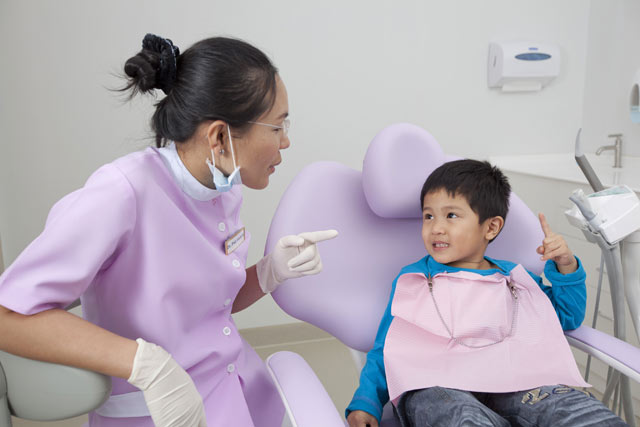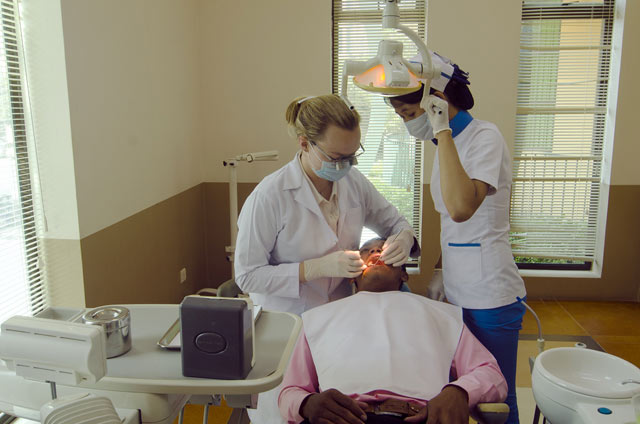Wearing the country’s medical tourism crown, Cambodia’s dental practices are blazing a trail that the Kingdom’s hospitals would be wise to follow
By Denise Hruby
His holiday was meant to be a simple, two-month trip to Southeast Asia, which included a three-day stay in Phnom Penh. But once 34-year-old American Kevin Quackenbush arrived, he decided to stay longer and save a few thousand dollars by getting his teeth fixed.

Photo by Denise Hruby
“It cost me $800. In the US, I would have paid $5,000,” he said, adding that the money he saved easily covered the rest of his trip.
Other Southeast Asian countries have already become top destinations for medical tourists from across the world, with hospitals operating to international standards for cosmetic surgeries, transplants, or knee and hip replacements, all for a fraction of the costs in more developed countries. In Cambodia, the general health sector is far from international standards, but in recent years dentists have started to cater to tourists, giving the country a taste of the potentially large revenues it could expect if hospitals were to improve.
“There is generally a high standard [of dentistry] here, and the prices are far more reasonable than in the West,” said Dr Sin Somuny, executive director of Medicam, an umbrella of Cambodian health NGOs.
Pachem Dental clinic, which has a total of four branches in Phnom Penh and Siem Reap, has seen increasing numbers of tourists seek treatments during their holidays, particularly at its Siem Reap branch.
“About 30% of our customers are foreigners… we estimate that half of them are just tourists,” said Keuk Nary, the clinic’s CEO. This represents about 120 dental tourists at the clinic per month: according to Keuk Nary, it was only about a dozen as recently as four years ago.
Tourists, she added, are a welcome source of revenue, as most of them get costly treatment, such as crowns, bridges and cosmetic surgery. In April, Pachem hired a dentist from the Netherlands to attract more foreigners, believing it would make them feel more comfortable.
Roomchang Dental and Aesthetic Hospital, one of the most expensive dental clinics in Cambodia, treats fewer tourists than Pachem as it lacks a strategic location in Siem Reap. However, the clinic has started to actively advertise to tourists online and in English-language brochures, and even helps customers book their “exotic” Cambodian holiday using the money they save on dentistry. Roomchang offers assistance with organising a trip to a luxurious hotel in Sihanoukville, eco-tourism in Koh Kong or elephant rides in Mondulkiri.

“Here, it’s about $2,000 for an implant for one single tooth. In other countries, like America or Australia, it costs between $4,000 and $8,000, and with the money people save, they can add a holiday in Cambodia,” said Dr Tith Hongyeou, Roomchang’s director.
With general healthcare in Cambodia remaining underdeveloped, the potential for medical tourists is limited to those seeking dental treatments.
“Dentistry is less complicated than cardiovascular disease or kidney disease,” said Medicam’s Dr Somuny, adding that the general health system in Cambodia is slowly improving.
Neighbouring Vietnam and especially Thailand, however, have long profited from the globalised health industry.
According to So Raingsey, a representative for Ho Chi Minh City’s FV Hospital, southern Vietnam is a prime destination for medical tourists from neighbouring countries, as well as Europe, Australia and the US. Currently, the hospital receives between 1,200 to 1,500 Cambodians per month, mostly from Phnom Penh’s emerging middle class.
Medical tourism, Raingsey said, has a big impact on the health sector and the overall economy. “Patients don’t travel alone,” said Raingsey. “They always travel with families, so they will spend [money on] accommodation, food, local transportation and, of course, shopping.”
Some Vietnamese hospitals have seen a 90% increase in medical tourists in the last four years, but a lack of government support hampers the development of foreign medical treatment.
Thailand has taken a more progressive approach and, since 2004, has actively supported medical tourism by promoting certain hospitals and popular treatments, ranging from tummy tucks to heart transplants.
According to the World Health Organisation, the sector is growing at 16% annually, and is expected to be worth more than $5 billion by 2015.
Hospitals that target medical tourists offer stays at luxurious suites and apartments within the clinic and translators for a variety of languages. Meanwhile, on a website run by the Tourism Authority of Thailand, reputable healthcare providers are advertised alongside hotels and limousine services.
Cambodia clearly has a lot of catching up to do. “Maybe in ten years, all Cambodians will stay in Cambodia for [general] treatment,” said Somuny.
Today, most dental tourists hear about the high standards of private clinics from family and friends who have lived in Cambodia.
Kevin Quackenbush was advised to seek treatment during his vacation by a friend living in Phnom Penh. Three crowns and a bridge later, he is satisfied with the service and has spread the word.
“I think my dad is coming soon,” he said.
Also view:
“Ensuring you enjoy the best of health” – Falling ill or suffering serious injury can have fatal results for your finances if you don’t have proper medical insurance
“Bedard’s top ten tips for travellers” – We’re in the business of risk mitigation,” International SOS’s Andy Bedard says. Here are Bedard’s top ten tips for travellers
“Saving grace” – Fifteen years after surviving a horrific plane crash, Andy Bedard finds his calling in Cambodia
